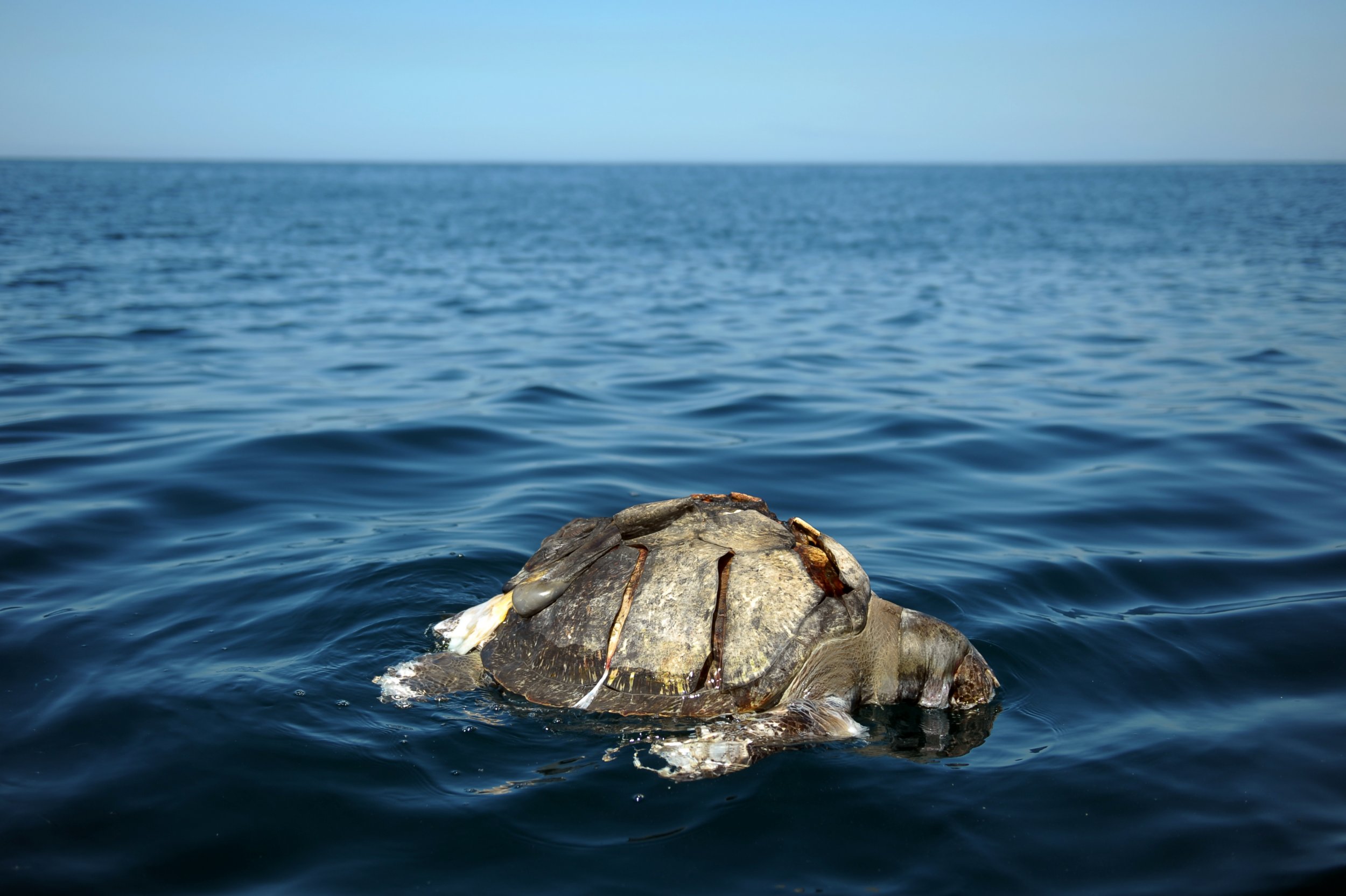
Off the coast of El Salvador, researchers have discovered a disturbing sight—300-400 dead, floating sea turtles. Some of them were endangered species.
The Ministry of Environment and Natural Resources (Ministerio de Medio Ambiente y Recursos Naturales El Salvador) posted on Twitter on Thursday about their discovery. They are unsure what killed the animals, but their prime suspect is a "Red Tide."
Guardarrecursos del MARN localizaron entre 300 y 400 tortugas marinas muertas flotando a unas 7 millas náuticas frente a BahÃa de Jiquilisco pic.twitter.com/331QZc5eXX
— MARN El Salvador (@MARN_SV) November 2, 2017
"Red Tide" refers to a massive algal bloom, which turns the water red. Too much algae is toxic to many animals, including sea turtles.
Because no parts of the turtles were taken, it's unlikely that poachers are to blame in this case. Another suspect that one might look to in this case is shrimp trawlers, which let down huge nets and catch everything in their path. Worldwide, 85 percent of the animals caught in shrimp trawlers, by weight, are not shrimp and are therefore discarded. El Salvador borders on the North Pacific Ocean, where 97 percent of the biomass caught by shrimp trawlers is thrown away. However, there is currently a moratorium on shrimp trawlers in the region, so that's not a likely culprit either.
All this does not mean that humans are not at least partially to blame. While algal blooms are a natural part of ocean ecosystems, human activity can make them much more intense: For example, water pollutants like sewage and agricultural runoff can feed harmful algal blooms, poisoning other animals and disrupting ecosystems.
Turtle conservationist for the Eastern Pacific Hawksbill Initiative Mike Liles told National Geographic that one reason we might see more dead sea turtles this year, as opposed to other years, is that there are more turtles in the ocean. According to the IUCN Red List, Hawksbills are critically endangered and declining, and Green Sea Turtles are endangered. However, the other two species that were found dead, leatherbacks and olive ridleys, are only listed as "vulnerable." Most of the dead were olive ridleys, and ridley populations are rebounding.
Still, sea turtles need all the protection they can get. In Australia, thousands of animals, including sea turtles, have washed up on beaches after being caught in discarded nets. With the threat of indiscriminate shrimp and fishing trawlers, illegal hunting, chemical pollution, and garbage pollution, a fatal red tide can be just another blow to their survivability.
The government of El Salvador is currently testing the turtle carcasses discovered in the ocean for toxicity to try and confirm a culprit.
Uncommon Knowledge
Newsweek is committed to challenging conventional wisdom and finding connections in the search for common ground.
Newsweek is committed to challenging conventional wisdom and finding connections in the search for common ground.
About the writer
Kristin is a science journalist in New York who has lived in DC, Boston, LA, and the SF Bay Area. ... Read more
To read how Newsweek uses AI as a newsroom tool, Click here.








